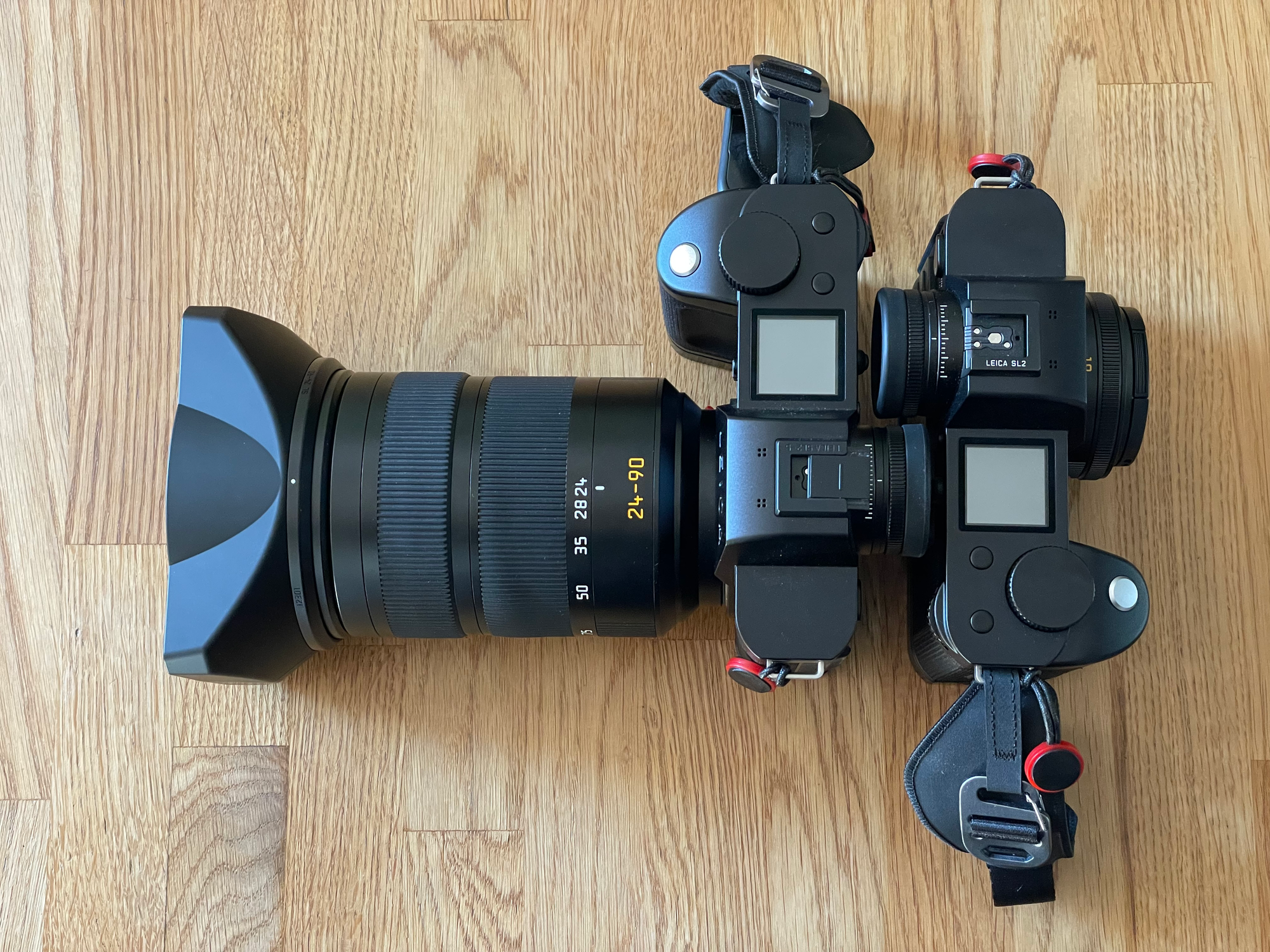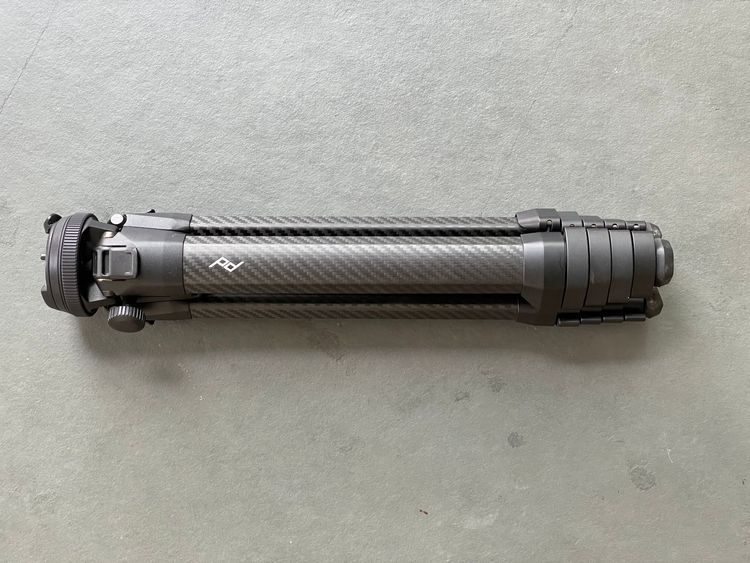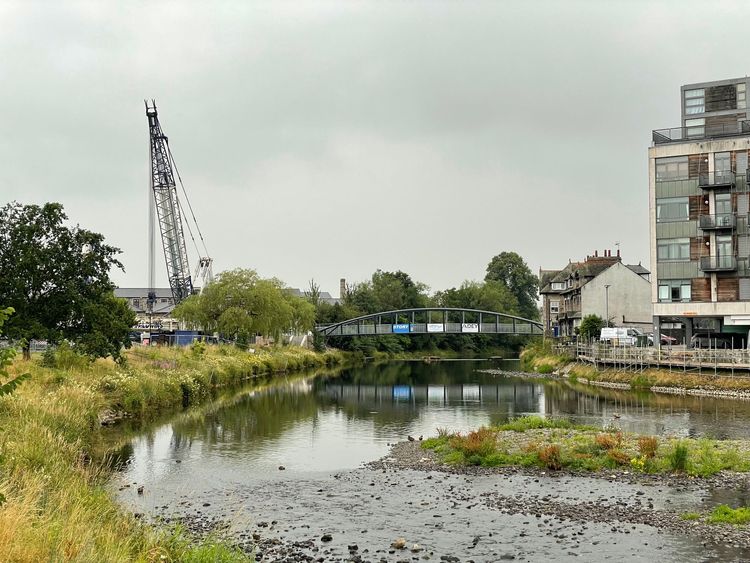Simplifying With The Leica SL
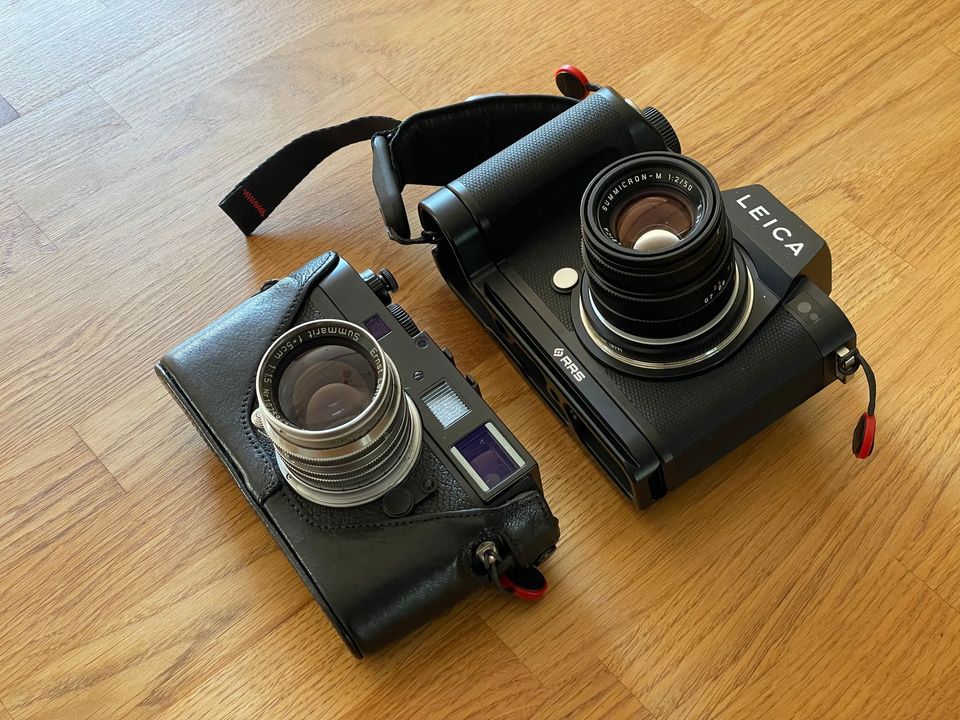
I'm lucky enough to have been able to own more than a few pieces of Leica gear over the years. However, Leica ownership is an odd business; everyone has an opinion on them as a brand and, quite often, they'll be compelled to share it with you in public. Even if you've never met them before. The online forums can be an eye-opening descent into gear tribalism. It’s difficult to own Leica gear and not have an opinion on it all in a way that, say, Canon owners don’t have.
In truth, I was turned off Leica for many, many years. The ostrich-grip, limited edition, celebrity-endorsed rangefinder and 50mm Summilux gift sets really do set my teeth on edge. And still do. I’m not the sort of person who cares whether Jason Momoa or Lenny Kravitz takes a few photos on an unobtanium rangefinder. Leica seemed like it was firmly aimed at the Dubai and Singapore influencer bling market.
However, as digital cameras got more and more complicated, I started to yearn for the simplicity that I'd started photography with when I was 12. I learned the basics of photography on Pentax SLRs, most of which I still own. In my day job, I spend my time designing and programming ridiculously complicated electronics; the last thing I want is to spend my time taking photos thinking about the litany of underlying autofocus modes and metering options. I understand it; I just don’t need it.
I flirted with medium format film for a while. I have a couple of Pentax 67 bodies that I love; they're gloriously idiosyncratic and about as basic as it comes. However, they're not useful for much besides landscape (for me) which, whilst useful, isn't everything I require a camera for.
My default setup for years has been Canon equipment. My first digital body was a Canon 60D. Subsequently, lots of 1Ds and 5D bodies and L lenses. I still own a fair amount of Canon gear. I've shot work that I'm pleased with on them, but they never really got me excited about making images. They’re really superb tools, but workmanlike. And, in the last decade, they’ve gotten ridiculously complicated. I own a Canon 5D Mark IV, which has just a ludicrous amount of configuration options and modes. I use about 1% of its features.
About a decade ago, I came across a used M8, and I was immediately curious. It was fairly basic and came with a ton of compromises, but it was interesting. I ended up buying it to play with. It was fun, and woke up a bit of my photography brain that was dormant, but I really wanted full-frame.
I sold the M8 and bought a used M9-P. As an aside, I think it's fair to say that I have never bought a new Leica camera or lens. Everything I own was bought pre-owned, usually from the forums at Fred Miranda. There’s never any shortage of Leica owners who want the very latest thing. If you can delay your gratification, there are always deals to be had.
The M9-P was a revelation. The controls were simple, images were gorgeous, even if the noise floor was immediately problematic once you moved beyond ISO 800. I loved the size and weight. I decided I wasn't going to spring for Summilux lenses; I wanted to keep things small and light. I bought some used Summicron and Voigtlanders and shot away, thrilled by the results. However, it wasn’t always practical for me. It fared badly in low light, and it wasn’t easy to focus in glasses.
So, with a few M lenses in my bag, I was curious about other compatible options. Ideally, a lightweight system with the option of both my MF Leica and some kind of AF lens? On the face of it, the Fuji X Pro2 was a perfect camera for me. Optical and EVF finders. Compatibility with Leica M lenses. A terrific set of AF lenses that don’t feel cheap. Lightweight. Designed for photographers. What’s not to like?
Well, it was with the Fuji X Pro2 that my problems with modern photography suddenly snapped into focus for me. I found the Fuji controls fiddly and unintuitive. The Fuji menu system drives me to distraction. Sure, you can ignore things and fall back to just manual options. But it’s hard to skip the dense menus, plethora of buttons and, ultimately, I just couldn’t get on with it. The final issue was that the crop-factor on the Fuji bodies makes M lens selection awkward if you need to shoot a true wide-angle (like 24mm).
Even given the limitations of the Leica M bodies for me, I found myself reaching for them over the Fuji.
I've owned a few Leica rangefinders over the years now. However, my eyes aren't what they were, and I now wear progressive lenses, which just makes manual focus a lot more work than fun, especially in low light or with fast apertures. Sure, you can buy an EVF for most recent M bodies, but they’re not ideal. I still shoot Leica rangefinders (with hard diopter adjustments) but, after a lot of chopping, changing and experimenting with EVF viewfinders, I now primarily use Leica SL2 and Leica SL2s bodies.
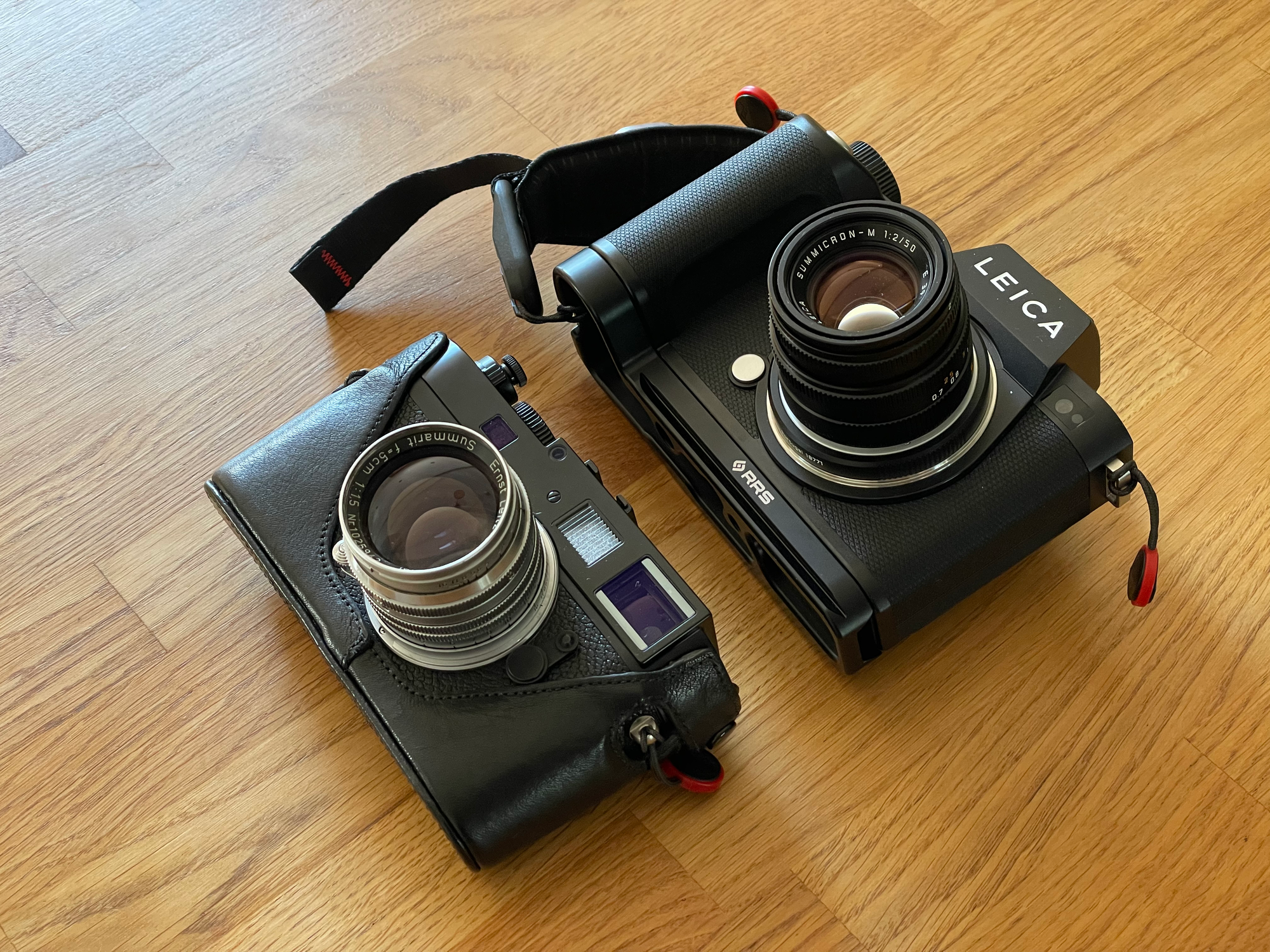
For me, the current SL2 is almost the perfect camera body. A control system that just gets out of your way when set up the way you want it. The flexibility to shoot AF lenses and legacy MF glass (using the M-L adapter). In-body image stabilization. Excellent ISO ceilings, especially on the SL2s.
The Leica SL lenses themselves are huge. It’s hard not to laugh when you see the 50mm Summilux-SL for the first time, especially if you own a 50mm Summicron-M. It’s such a monster of a lens; but admittedly with the image quality to match. I can’t justify owning it though. I do own the 24-90mm Vario-Elmarit-SL as a lens that I use for the vast majority of grab-it-and-go days. It does handle well with the SL2 body, which has enough mass to balance it out. However, it’s no one’s idea of a svelte bit of glass and your chances of working incognito with it in public spaces are zero.
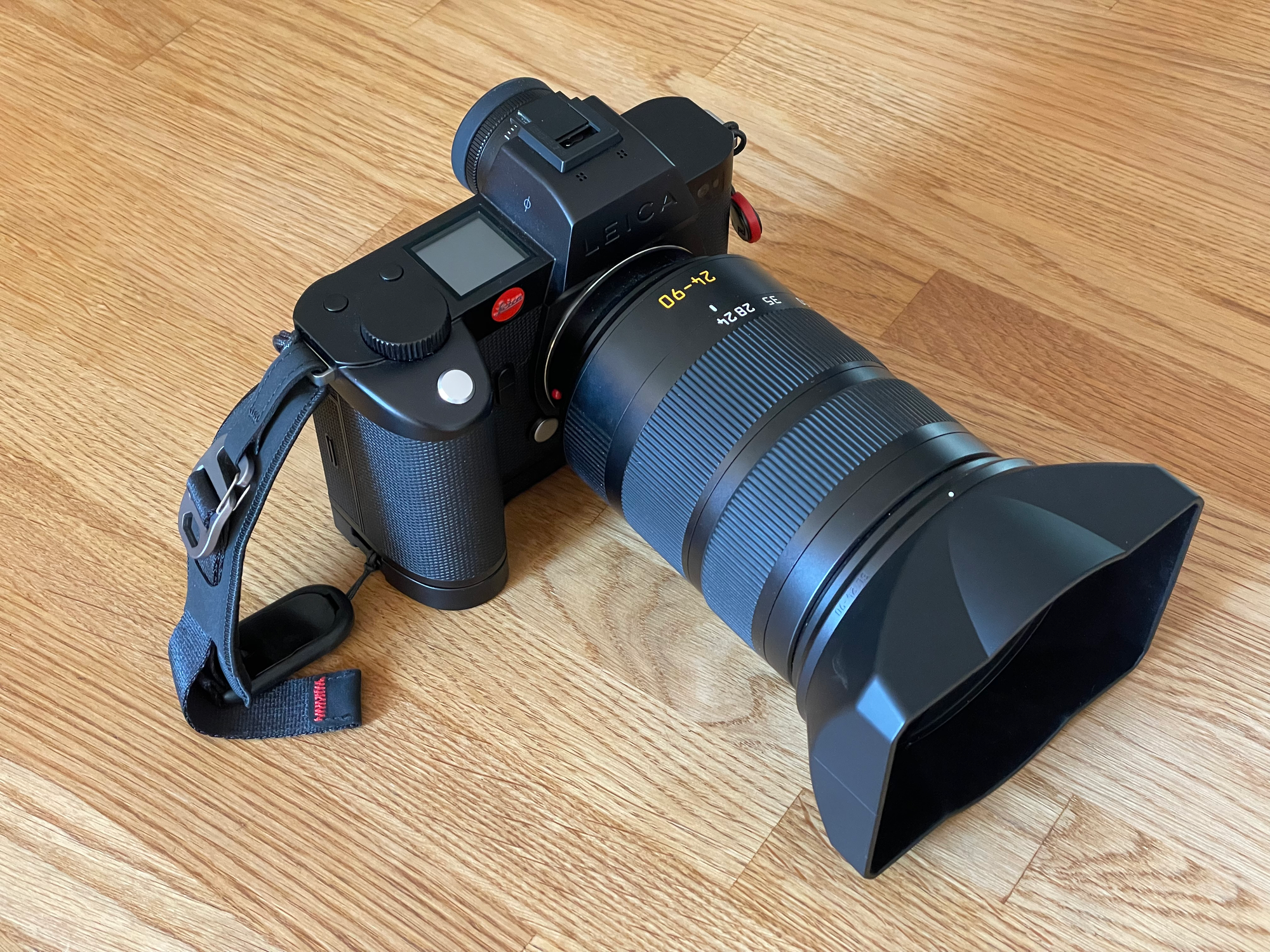
The SL2 is a slab, though. Milled from a block of aluminum, it’s a dense handful the first time you pick it up, but it’s not really much heavier than a digital M body. And, its austere heft belies its user-friendly charms and simplicity. After some experimentation with the SL, CL and Q bodies, Leica have standardized on the back button arrangements. The Menu, Play, and Function button layout is a nice balance. Your fingers automatically come to rest on the controls that matter. It’s clear that someone at Leica has thought about this.
This is the crux of why I settled on the SL cameras. The design of them really speaks to me and, most importantly, works for me. I hardly ever need to refer to the user guide. The menus are shallow, straightforward and fairly minimal. The design choices are obvious, and the product team at Leica have obviously sweated details that other manufacturers would have just put on another button or menu option. The design language is consistent, and the whole camera is geared towards taking photos (or videos, if that’s your thing). It’s striking just how few other manufacturers deliver this sort of design experience.
For example, there are two custom buttons on the front of the SL2. You can set them as you want them. I have the top button set to Magnification (where it zooms to show focus). The bottom button is DoF Preview, which Leica added as a software function in the SL2 4.x firmware. If you want something else (AF mode, perhaps), you can set that instead. Most functions are assignable. Top buttons select ISO and Image Stabilization. The SL2 cameras are customizable so that they have the controls you want, not the controls the product team picked.
The SL2 family is an ideal pairing with rangefinder lenses. The SL body provides a solid platform to work with them, and they feel balanced and smooth in the hand. Wide-angles lenses, which are often an external viewfinder chore on an M rangefinder, become transformed into ideal travel lenses.
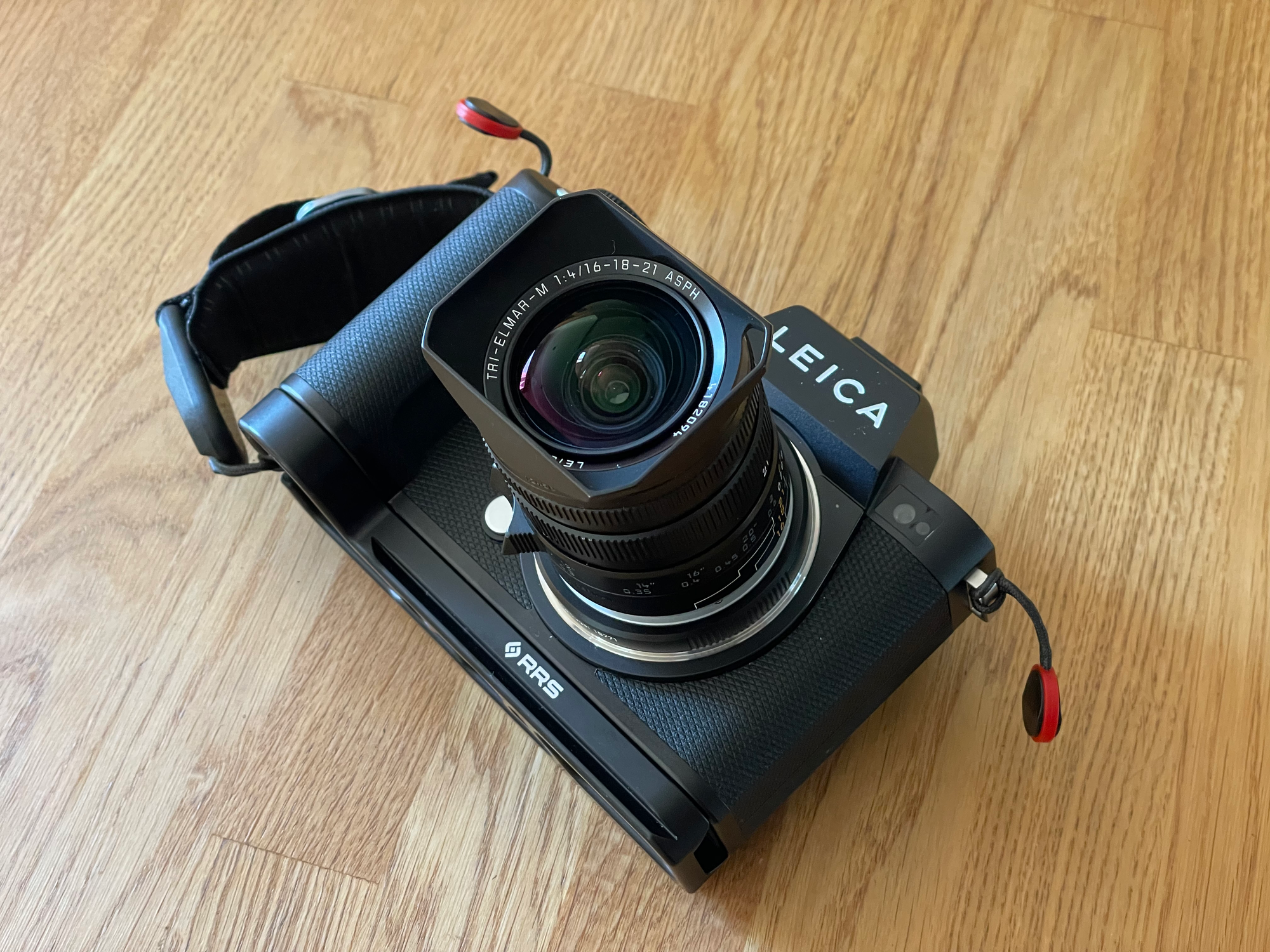
Of course, all of this would be meaningless if the resultant images were terrible, but the image quality with the M lenses is superlative. If the M lenses are 6-bit encoded, the M-L adapter will set the lens metadata correctly in images. The MF hints are helpful and configurable, and the SL2 EVF is exemplary. I've used quite a few EVFs over the last few years, but the SL2 version is really superb. Working with manual lenses on the SL2 is an utterly natural activity. There’s a magic in being able to shoot mid-1950s German and Japanese M39 lenses on 2020s technology and do it in such an intuitive way.
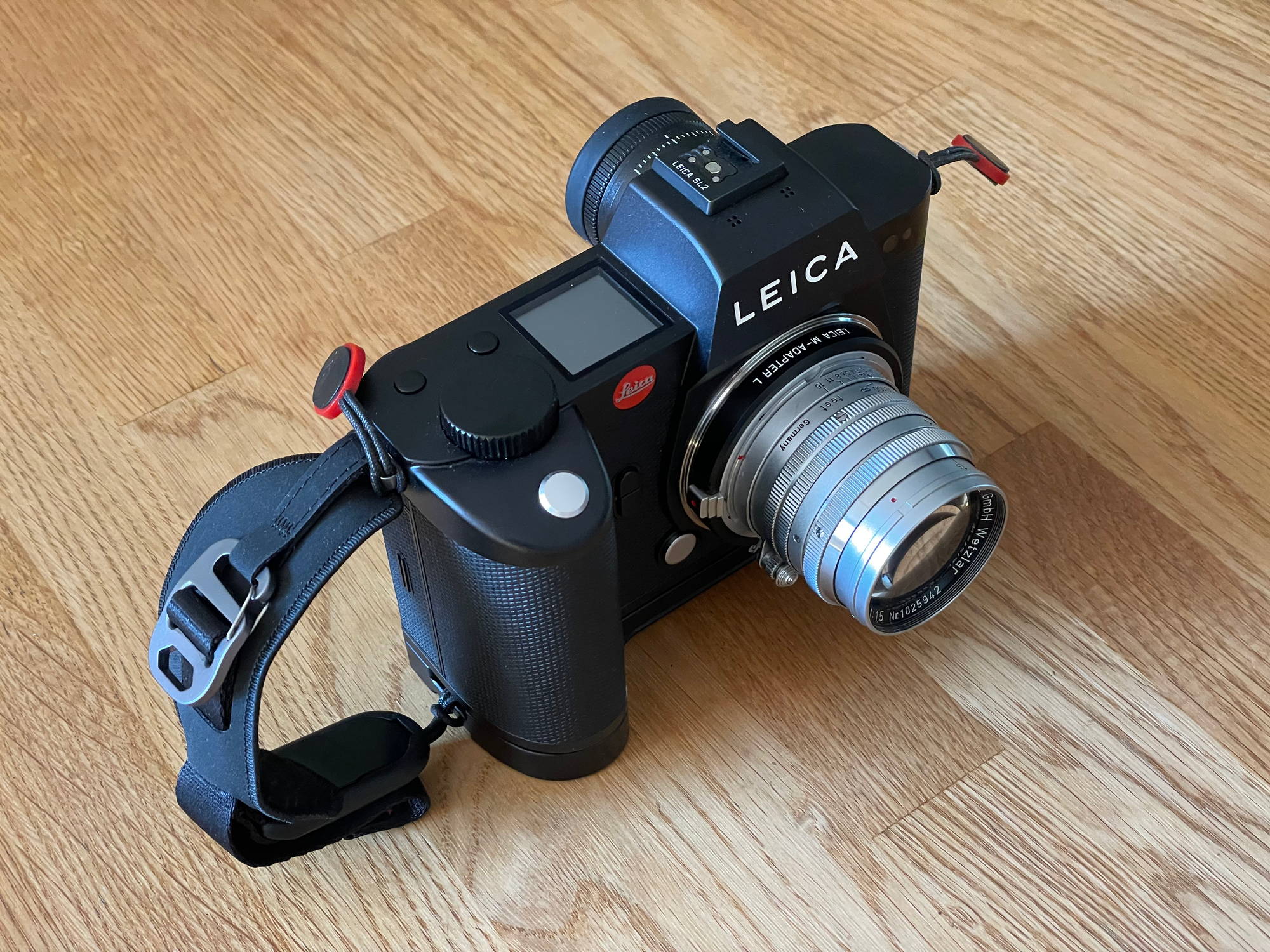
At this point, we come around to the statement I led off with. Leica ownership is an odd business. If you spend any time on the various Leica forums, it won’t take you any time at all to find the Leica Summilux Militia. For them, there’s no point at all in using the SL bodies unless you’re going to use the Summilux-SL primes. Or, to be honest, any Leica body unless you'll use the most expensive Leica lens available at your desired focal length. The Thorsten von Overgaard effect. Any discussion of the other lens options is shut down with disdain, pixel peeping and just general snobbish prejudice. There’s only one true lens family for the SL, and it’s those monster SL primes. They’ll rattle out all the reasons that a retrofocus rangefinder lens is a terrible idea on the SL. Even better is if you dare to suggest using the excellent Leica TL lenses on the SL2 (it has a 20MP APS-C mode, which is enormously useful). Heresy!
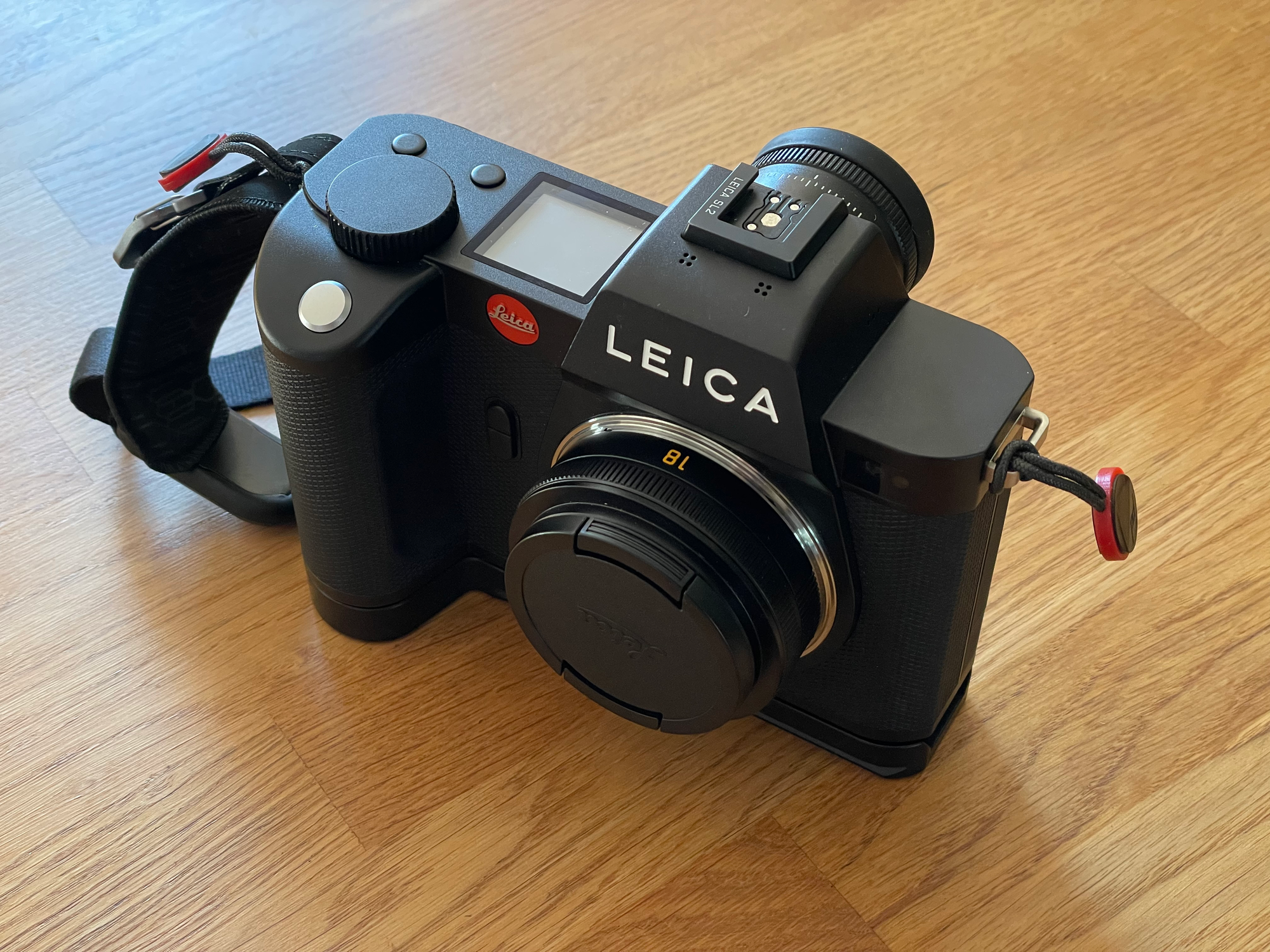
Which is perverse, as to use the SL2 and SL2s with just the SL lenses is to miss a lot of their appeal. Leica have taken extraordinary care to make them work well with M lenses. But, more than that, they work well with all manual focus rangefinder lenses.
The Leica SL bodies really are some of the most flexible, exciting, configurable camera bodies that Leica has ever shipped.
